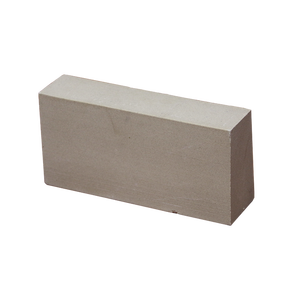Discover Premium Ceramic Products | Durability & Elegance United | Advanced Ceramics
1. Introduction
Just 24 hours ago, a major foundry in Ohio reported a production halt due to repeated silicon carbide crucible failures during aluminum melting—a reminder of how critical proper handling is for this high-performance ceramic. Silicon carbide crucibles are prized for their exceptional thermal conductivity, resistance to thermal shock, and ability to withstand temperatures above 1600°C. Yet, even the best-made silicon carbide crucible can crack, degrade, or contaminate melts if used incorrectly.

Whether you’re in metallurgy, lab research, or artisanal casting, this guide walks you through practical steps to use and maintain your silicon carbide crucible effectively—avoiding costly mistakes and downtime.
2. Understanding Your Silicon Carbide Crucible
Silicon carbide (SiC) is a compound of silicon and carbon known for its hardness and thermal stability. A silicon carbide crucible is typically made from sintered SiC or reaction-bonded silicon carbide (RBSiC), offering superior performance over traditional clay-graphite or alumina crucibles.
It’s worth noting that while silicon carbide is excellent for many applications, alternatives like silicon nitride crucibles—produced by specialized silicon nitride crucible factories—may be better for certain reactive melts. Similarly, when comparing boron carbide vs silicon carbide, boron carbide is harder but more brittle and expensive, making SiC the go-to for most industrial uses.
3. Step-by-Step Guide to Using a Silicon Carbide Crucible
3.1 Preheat Gradually
Never place a cold silicon carbide crucible directly into a hot furnace. Thermal shock is the #1 cause of cracking. Instead, ramp up the temperature slowly: start at 200–300°C for 30 minutes, then increase by 100–150°C every 15–20 minutes until you reach your target temperature.
3.2 Load Material Carefully
Avoid dropping metal ingots or scrap into the crucible. Use tongs or a charging basket to gently place material. Sharp impacts can chip the interior, especially in thinner-walled designs like silicon carbide ceramic columns or rings.
3.3 Avoid Overfilling

Fill only to 70–80% capacity. Molten metal expands, and splashing can erode the crucible walls or cause spills. This is especially important when melting reactive alloys.
3.4 Use Compatible Fluxes and Additives
Some fluxes contain alkalis that react aggressively with SiC. Always verify chemical compatibility. For high-purity applications, consider using a silicon nitride plate or custom silicon nitride heat shield as a barrier.
4. Cooling and Storage Best Practices
After use, allow the crucible to cool naturally inside the furnace with the power off. Forced air or water cooling can cause microfractures. Once cooled to below 100°C, remove it and store in a dry, dust-free area.
Never stack crucibles or place heavy objects on them. Even robust forms like silicon carbide brick or RBSiC silicon carbide tile block can develop stress cracks under pressure.
5. Common Problems and Solutions
5.1 Cracking or Spalling
Cause: Rapid heating/cooling or mechanical impact. Solution: Follow gradual ramping protocols and handle with care.
5.2 Glazing or Buildup on Interior

Cause: Repeated use with certain alloys (e.g., aluminum) forms a glassy layer. Solution: Clean with a soft brush or mild abrasive like a silicon carbide grinding disc—never use steel wool.
5.3 Reduced Lifespan
Cause: Using the crucible beyond its rated temperature or with incompatible materials. Solution: Check manufacturer specs; for ultra-high-purity needs, explore high purity silicon nitride powder market alternatives.
6. Beyond Crucibles: Other Silicon Carbide Ceramic Products
While this guide focuses on crucibles, silicon carbide’s versatility extends to many forms. You’ll find silicon carbide ceramic baking dishes, silicon carbide ceramic dinner plates, and even silicon carbide ceramic butter dishes in high-end cookware. In industrial settings, silicon carbide burner nozzles, silicon carbide tubes for furnaces, and silicon carbide ceramic pipes are common.
For plumbing or fluid control, components like silicon carbide ceramic disc taps and silicon carbide ceramic disk for tap offer wear resistance. Meanwhile, silicon carbide discs and silicon carbide ceramic grinding discs are widely used in pottery and machining.
7. Conclusion
A silicon carbide crucible is a powerful tool—but only if treated with respect for its material limits. By following proper preheating, loading, cooling, and cleaning routines, you can extend its life significantly and ensure consistent, contamination-free results. Whether you’re melting metals, running lab experiments, or exploring ceramic dinnerware like silicon carbide ceramic serving bowls or silicon carbide blue white porcelain plates, understanding the fundamentals of SiC care pays off in performance and cost savings.
Our Website founded on October 17, 2012, is a high-tech enterprise committed to the research and development, production, processing, sales and technical services of ceramic relative materials such as How. Our products includes but not limited to Boron Carbide Ceramic Products, Boron Nitride Ceramic Products, Silicon Carbide Ceramic Products, Silicon Nitride Ceramic Products, Zirconium Dioxide Ceramic Products, etc. If you are interested, please feel free to contact us.
